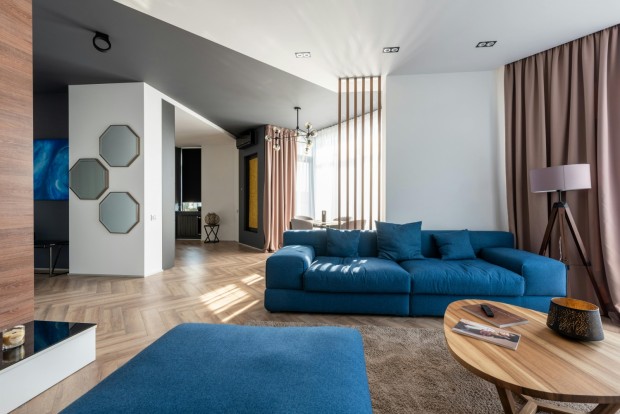Construction walls separate different areas within a structure, utilizing a diverse array of materials to meet specific needs. Each type of construction wall offers unique characteristics, ranging from strength and durability to aesthetic appeal and acoustic properties.

(Photo : Pexels/Max Vakhtbovycn )
1. Concrete Partition Wall
Concrete is the material of choice for constructing a partition wall that is not only solid but also secure. The typical thickness of a partition wall made of concrete is 10 centimeters. It is essential to clarify your requirements with the construction worker beforehand because they might or might not supply reinforcement. This could improve the wall's strength and durability by placing mild steel bars in the middle of the wall. It is also known as fireproof, soundproof, and durable.
2. Hollow Partition Wall
Porous partition walls are generally constructed from clay, terracotta, and concrete. Since they are sturdy, lightweight, powerful, inexpensive, and fire-resistant, hollow wall partitions are a popular choice among homeowners. These materials can even effectively insulate against sound. Moreover, the partition wall's thickness typically falls somewhere between 6 centimeters and 15 centimeters. Brick walls are constructed using a procedure comparable to those used to make hollow partition walls.
3. Glass Partition Wall
A glass partition wall provides adequate levels of privacy and sound insulation. It is not only straightforward to create but also lightweight, simple, and cost-effective. The glass sheet or hollow glass pieces that make up this partition wall are used in its construction. Installing a sheet of glass within a wood framework is the method used to create a glass sheet partition wall.
Accordingly, in this particular form of the partition wall, the glass sheets are secured within a lumber framework utilizing putty or timber beadings. Also, a partition wall made of hollow glass blocks is called a hollow glass block. Aside from being lightweight and created in a wide range of thicknesses, forms, and sizes, hollow glass blocks are transparent glass units.
Also Read: Unraveling Construction Catastrophes: Common Pitfalls to Avoid for Project Success
4. Brick Partition Wall
With plaster applied to both surfaces, brick walls are renowned for their stretcher bond. The usage of raw materials in the construction of this wall contributes to its cost-effectiveness. These materials are often challenging, long-lasting, reusable, and recyclable. Additionally, the manufacturing procedure reduces environmental pollution, which is a feature of this product. The only material used to construct brick partition walls is plain brick, made up of three distinct varieties of bricks: reinforced bricks, brick-nogged bricks, or hollow bricks. As mentioned, two meters is the maximum height the plain brick wall of half-brick rigidity can reach. Brick partition walls are reinforced with reinforcement to reinforce the shape of wire mesh, hoop iron, or steel bars.
5. Metal Lath Partition Wall
Despite their thinness, metal lath partition walls are not only sturdy and long-lasting but also extremely incombustible. The framework, which can be made of steel or lumber, is required to secure them in place. At 15 to 30 centimeters intervals, the lath is secured to soft-cast steel bars or channels through the galvanized iron wire. In addition to possibly enhancing the insulation against heat and sound, it will be painted on both sides.
6. Wooden Partition Wall
Even though they are not soundproof or fireproof, wooden partition walls are easier to install and lighter in weight than other materials. However, when it comes to damp environments, this partition wall is not suitable. All of the edges of wooden partitions are made of wood, and they are attached to a sidewall and secured to the ground. This can be accomplished by covering the wall with sheets or mortar on both sides to create a sturdy partition.
Related Article: Partition Walls in Construction: Everything You Need to Know







